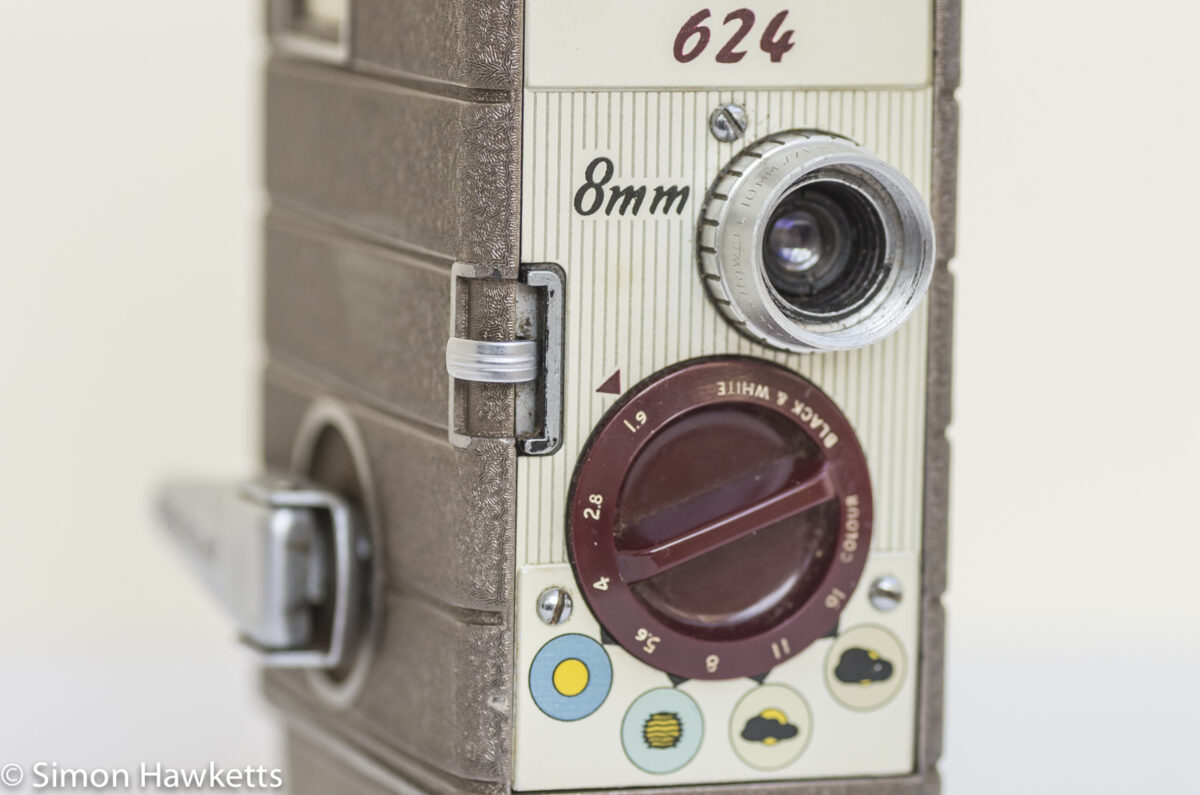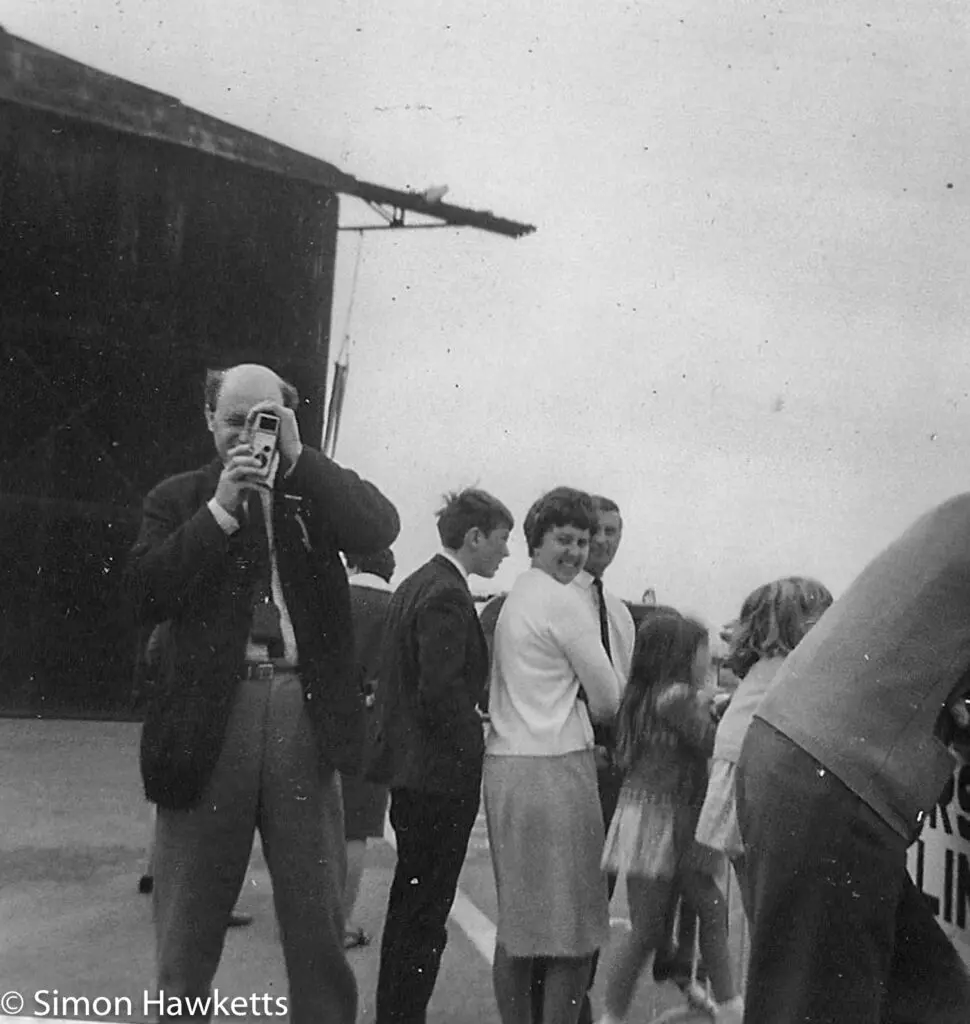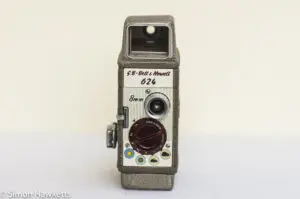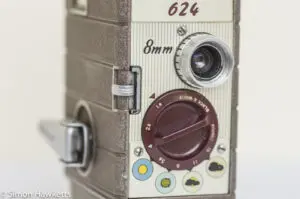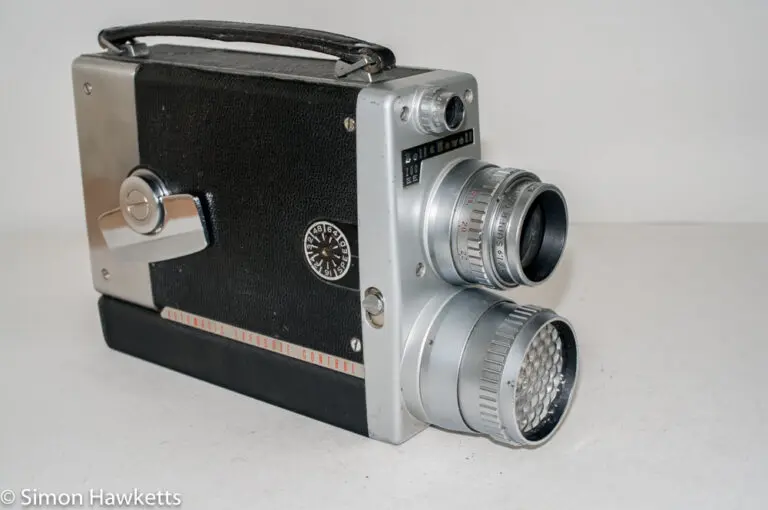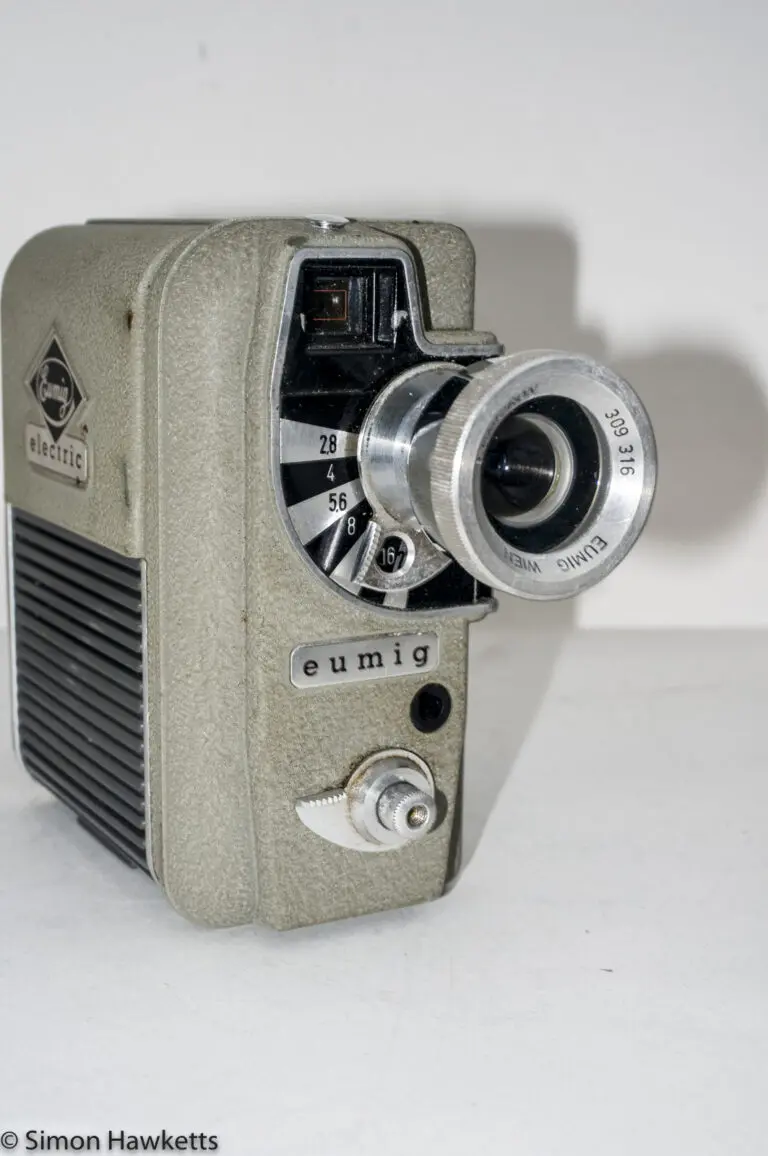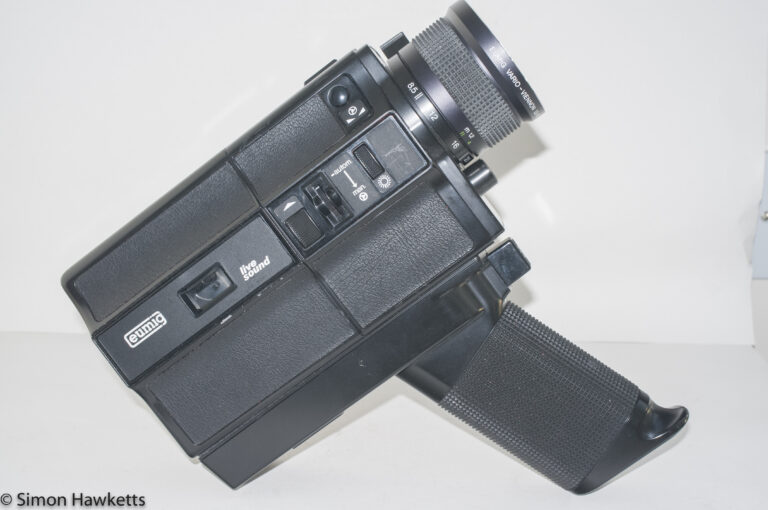Nostalgic Bell & Howell 624 8 mm movie camera
This is a review of an 8 mm cine camera which was very popular in the 1960s – the Bell & Howell 624.
My Bell & Howell 624 Camera
I bought this camera for purely nostalgic reasons.
I remember my Dad having one very similar in the early 1960s, which he used to take family movies. It was a real treat the day a film came back from processing, and we could all gather together in the sitting room as Dad set up the projection screen to show the new film.
Of course, since the equipment was all set up, we would invariable watch all the other films again as well, and it became a really fun family evening.
I saw the camera on eBay for sale from one of the charity shops and had a search through the old pictures I have because I was sure I’d seen one of Dad using the camera. Sure enough, after a quick search I found the picture on the right, which was taken at the East Midlands airport in about 1968 when we went on holiday with my Mum’s brother.
I remember watching the film he took of the aeroplanes and me running around as a small boy, but unfortunately we no longer have all the films he took. He stored them in his workshop in the garden, and rain got in and destroyed all but a handful of them.
Since the camera on eBay was only a couple of pounds, I bought it.
When it turned up, I checked that the mechanism worked and ran the motor for a few minutes before I opened the film chamber up. Experience has taught me that it’s always best to treat any bought camera as if it has film in, and this proved to be a good rule because once I’d run it for a few minutes I took the film loading side off and found there was still a reel of 1960s film in the camera!
What’s more, on the reel was a label saying, ‘Film when on this spool is only half exposed’, so I have half a reel I can try the camera with! (Although I’m not sure if I can get it developed).
Pictures of the Bell & Howell 624

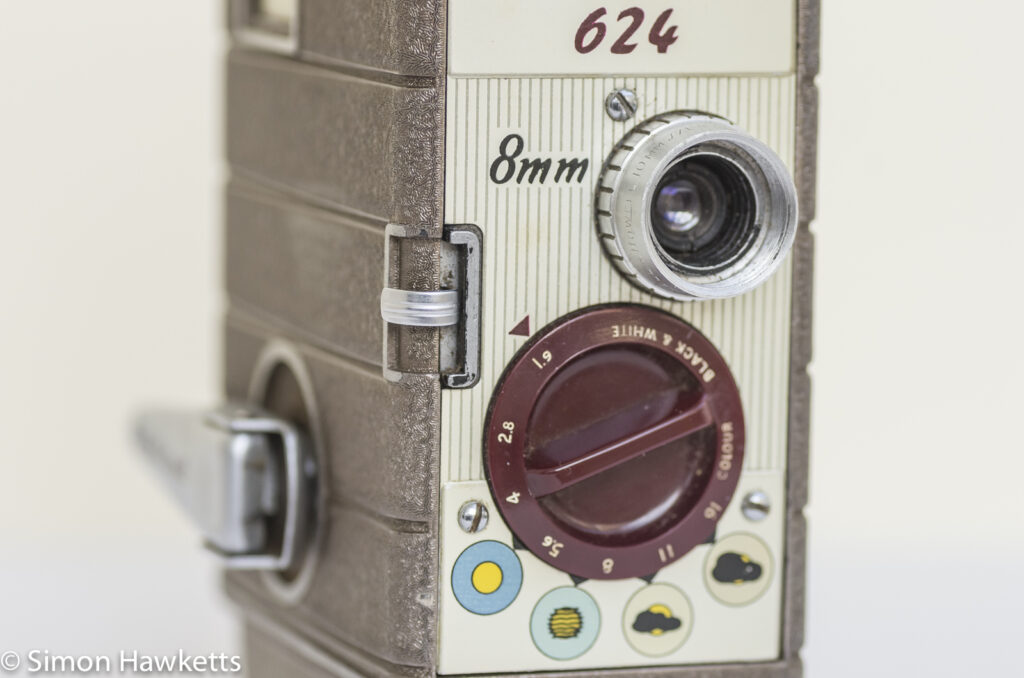
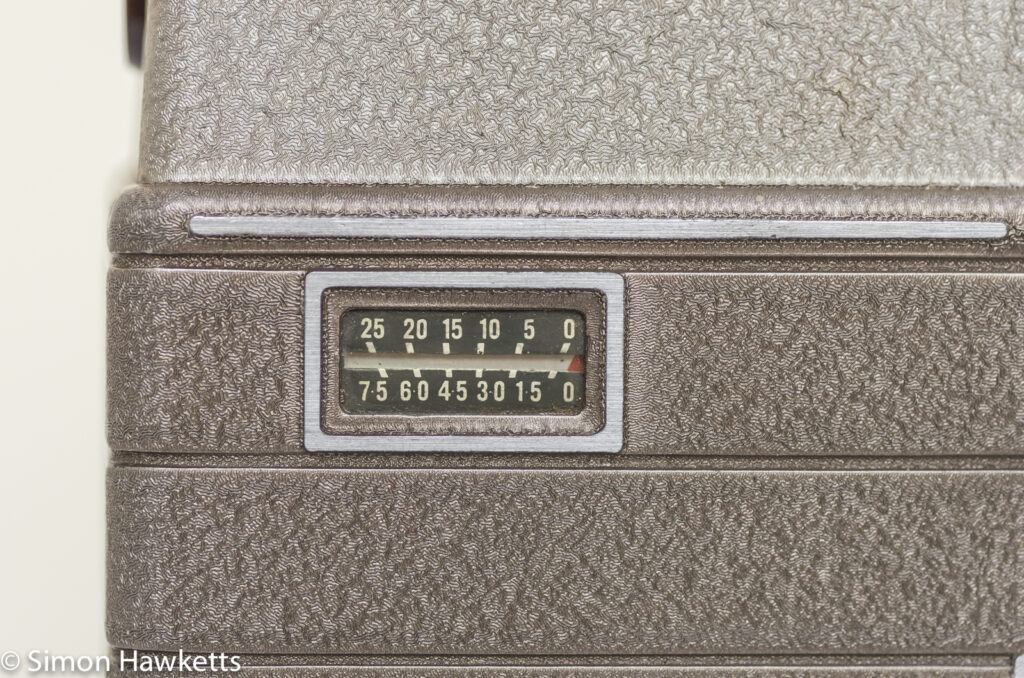

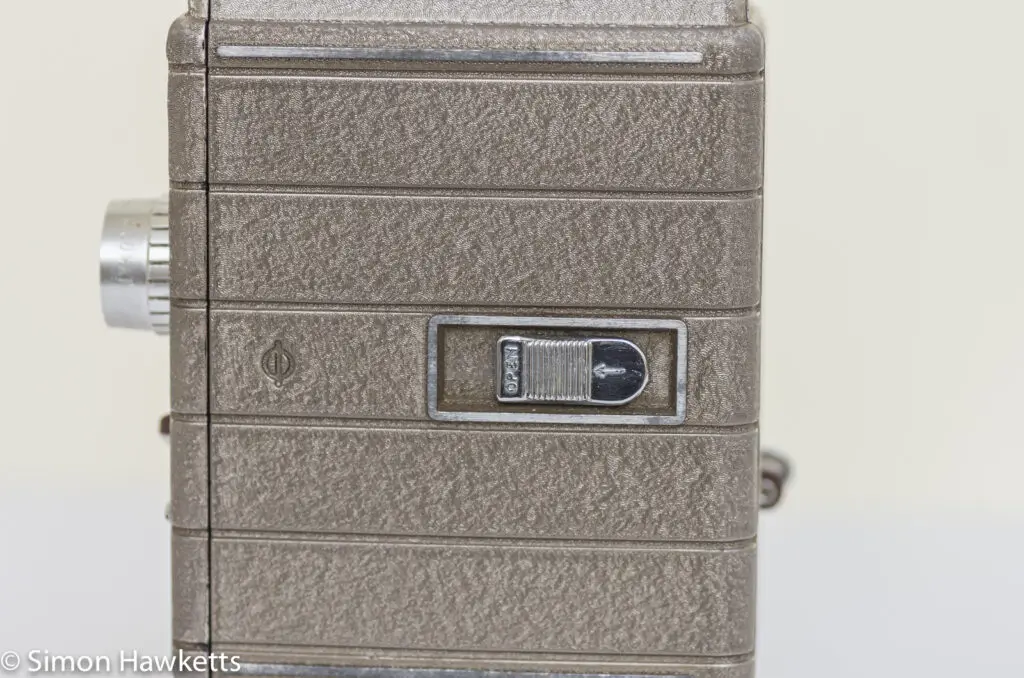
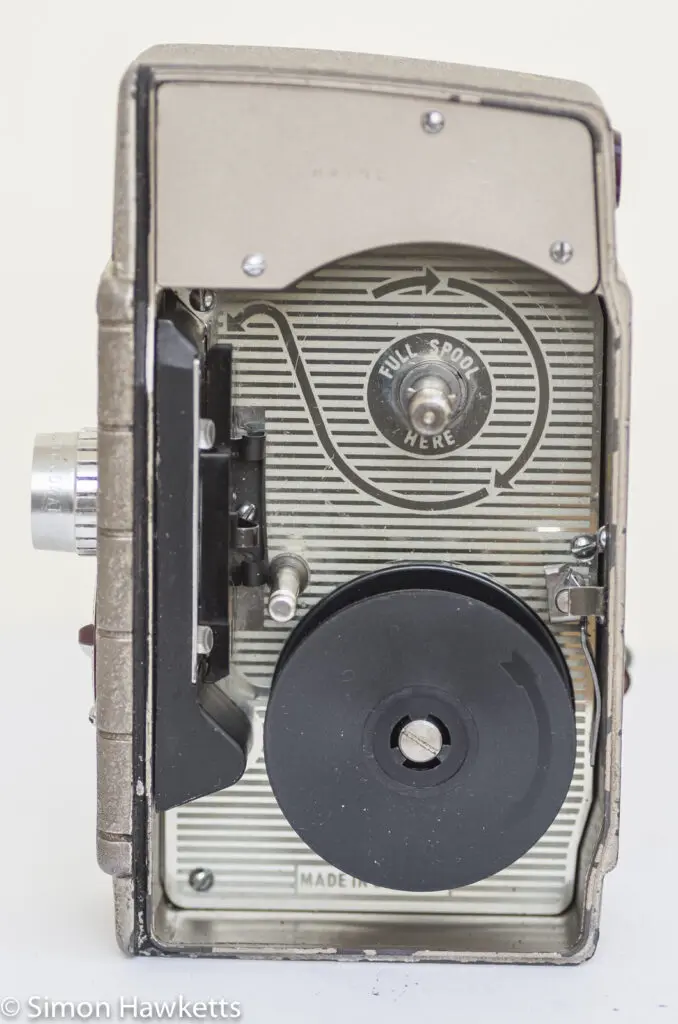
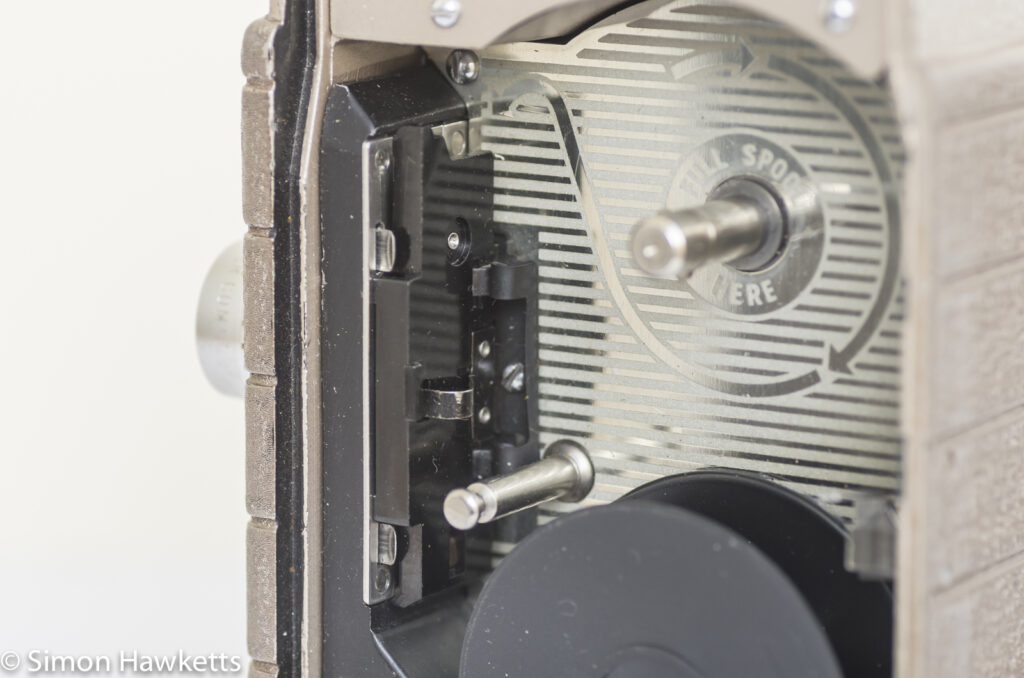
Bell & Howell 624 Description
The Bell & Howell 624 is a clockwork powered cine camera which takes standard 8 film. There was no soundtrack on standard 8 film, so the camera has no facilities for recording sound.
In fact, standard 8 film was supplied as a 16 mm reel with sprocket holes down both sides, but when it was exposed in the camera the pictures were recorded on one edge of the film only. Once the film had passed through the camera, the reel was removed from the bottom of the camera and put on the top spool carrier, with the empty spool moving to the bottom. The film was then run through the camera a second time to expose the other half.
When it was processed, the film was split up the middle and the two halves joined together to make a single 8 mm film with sprocket holes on one side only. I remember you could tell where the join was because that part of the film would be fogged, so as it was projected, the screen went black.
As I said above, the film transport is driven by clockwork, and there is a large handle on the side to wind the camera up. A full wind gives about 30 seconds of filming, but since the whole film (both sides) would only last about 4 minutes in total, 30 seconds of filming represents a fair percentage of the film.
The exposure is set with an adjustment of the aperture, it’s not possible to set the shutter speed. To set the aperture there is a rotary switch on the front of the camera which has both aperture f-stops marked and icons representing different weather conditions such as sunny, cloudy etc. It was possible to get light meters to use with cine cameras, but I suspect most people used the weather icons, which are essentially Sunny 16.
Once the aperture was set and the motor wound up, the camera was good to go; there is no focus to set because even with an aperture of f/1.9, which was the maximum offered, the focal length of the lens (10 mm) means that everything from a couple of feet away will be in focus. You simply look through the simple viewfinder at the top, make sure the subject is within the lines engraved in the viewfinder and press the button!
The shutter release on the front of the camera has two positions. When pressed down, the camera records cine scenes for as long as the shutter is kept running. There is also an up position which will expose one frame at a time, which I suppose was used for stop frame animation.
On the side of the camera is a scale which tells you how much film you have remaining. This is driven by a lever which presses against the film in the bottom reel in the camera. As the film spools onto the reel and fills it up, the lever moves the scale.
All in all it’s a remarkably simple camera which was incredibly popular, and very solidly made. Looking on eBay shows that the price I paid was on the low end but certainly not exceptionally low, and they are easy enough to pick up at that sort of price.
Mind you, I don’t think it’s possible to find standard 8 film any more, so I guess they would only be bought by collectors and people who remember them from the 60s.
Bell & Howell 624 standard 8 camera specs.
- Bell & Howell 624 movie camera
- Uses Standard 8 silent film
- Clockwork driven – one wind about 30sec filming time
- Bell & Howell 10 mm f/1.9 Comat lens
- Aperture f/1.9 to f/16
- Single frame or 16 fps movie capture
- Fixed focus
- Simple scale measure of remaining film
- Viewfinder for framing with the frame size marked
Discover more from Everything Vintage
Subscribe to get the latest posts sent to your email.

